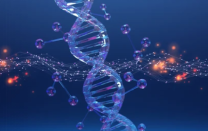
The sequencing of molluscan genomes is driven by a wide range of ecological, economic, and scientific reasons. Genomic resources can also be used to manage breeding programs more efficiently by allowing variance detection, selective breeding, and genealogical assignments, ultimately leading to new ways to improve the productivity and value of farmed species. Lifeasible can provide mollusk genome analysis services, including mollusk DNA extraction, whole genome sequencing, transcriptome sequencing, and mitochondrial sequencing.
Mollusks are commonly used as a protein source worldwide, namely bivalves, cephalopods, and gastropods. In addition to resources directly associated with humans, mollusks play an important role in their habitats, maintaining ecosystem functions, promoting ecological services, and generating economic benefits. The environmental and biological characteristics of some species, such as rapid growth, short lifespan, high fecundity, and high dispersal ability, combined with strong tolerance to pollutants and climatic fluctuations, as well as aggressive and diverse feeding behavior, confer excellent adaptive success to these species. The molecular techniques used to sequence DNA and assess its variation have had an extraordinary impact on biology, revolutionizing the fields of systematics, physiology, biochemistry, evolutionary biology, and ecology. High-throughput sequencing methods were mainly applied to model organisms, especially in the biomedical field. However, these tools quickly took the stage and are now commonly used in the targeted transcriptome, macro genome, epigenome, exome, mitogenome, and, more importantly, whole genome (re)sequencing.
Genomic studies rely on comparative analyses of genome structure, organization, and genome composition, as well as expansion and expression level identification of several gene families to identify genomic features that may explain some of the most fascinating characteristics of mollusks. Services currently available from Lifeasible include the following.
DNA carries genetic information. The most used DNA extraction methods are phenol/chloroform/isopentyl alcohol, CTAB, and SDS, which require multiple extractions of organic reagents to remove proteins and polysaccharides, resulting in high-quality DNA.
Whole genome sequencing reveals the complete DNA composition of an organism, allowing us to better understand variation within and between species. In turn, this allows us to distinguish between organisms with a precision not available with other technologies.
Transcriptome sequencing is a technique for sequencing all mRNA produced by cell or tissue transcription under specific conditions. It is not limited to the study of individual genes but also allows the study of non-model organisms that do not have a reference genome.
Mitochondrial DNA (mtDNA) is widely used in studying biological evolution and population structure due to its unique maternal inheritance pattern and high mutation frequency. Second-generation sequencing allows easy access to mitochondrial DNA sequence information.
If you are interested in our services, or if the service you want is not listed, please feel free to contact us, and we will get back to you as soon as possible.